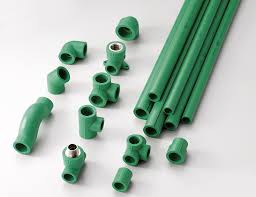Jul . 27, 2024 20:07 Back to list
Transitioning from HDPE to PVC in Manufacturing Processes for Enhanced Product Versatility and Performance
Transition Coupling from HDPE to PVC A Comprehensive Guide for Manufacturers
In today’s ever-evolving manufacturing landscape, the need for efficient and seamless integration of materials is more crucial than ever. One such transformation that has gained significant attention is the transition coupling between High-Density Polyethylene (HDPE) and Polyvinyl Chloride (PVC). Both materials are widely used in various applications, particularly in the construction industry, where their unique properties contribute to the durability and functionality of structures. Understanding the nuances of coupling HDPE to PVC is essential for manufacturers aiming to enhance their product offerings and meet the diverse needs of clients.
Understanding HDPE and PVC
Before delving into transition coupling, it is important to understand the characteristics of HDPE and PVC. HDPE is known for its high strength-to-density ratio, making it suitable for products that require high durability. It is resistant to impact, chemicals, and UV radiation, which contributes to its longevity. In contrast, PVC is valued for its versatility, cost-effectiveness, and ease of fabrication. It offers excellent resistance to environmental factors but is typically less flexible than HDPE.
The Need for Transition Couplings
The demand for systems that integrate both HDPE and PVC is driven by the need for diverse functionality in pipelines, drainage systems, and other infrastructure projects. Transition couplings are essential when a project requires the use of both materials, as they facilitate the connection while maintaining the unique benefits of each. Properly designed transition couplings can prevent leaks, reduce stress on pipes, and ensure long-term performance, making them indispensable in modern manufacturing.
Key Considerations for Manufacturers
When designing transition couplings from HDPE to PVC, manufacturers must consider several factors
transition coupling hdpe to pvc manufacturer

1. Material Compatibility Different materials behave differently under stress, temperature changes, and environmental exposure. Manufacturers must ensure that the coupling can accommodate the mechanical and thermal properties of both HDPE and PVC.
2. Sealing Solutions Effective sealing is critical to preventing leaks. Manufacturers can employ O-rings, gaskets, or solvent welding techniques, depending on the application and environmental conditions. The chosen sealing method must provide a reliable barrier against pressure and chemical degradation.
3. Installation Techniques Easy installation is vital for the success of transition couplings. Manufacturers should consider designs that allow for straightforward assembly, reducing the need for specialized tools or extensive training.
4. Standard Compliance Compliance with industry standards and regulations ensures that products are safe and reliable. Manufacturers should familiarize themselves with the relevant specifications governing the use of HDPE and PVC in their specific markets.
5. Cost-Efficiency While it's important to focus on quality, manufacturers must also consider cost-effectiveness. Utilizing advanced manufacturing technologies and optimizing design can help reduce material waste and labor costs.
Conclusion
In conclusion, the transition coupling from HDPE to PVC presents a valuable opportunity for manufacturers seeking to enhance their product lines and satisfy the evolving needs of the construction and infrastructure industries. By carefully considering material compatibility, sealing solutions, installation techniques, compliance, and cost-efficiency, manufacturers can create robust solutions that leverage the strengths of both materials. As the demand for innovative coupling solutions continues to grow, staying ahead of industry trends and investing in R&D will be key to maintaining a competitive edge. Embracing this transition will not only improve product offerings but also contribute to the sustainability and longevity of construction projects worldwide.
-
HDPE Sprinkler Pipe Manufacturers - Quality & Durable Solutions
NewsAug.17,2025
-
Durable DN100 PVC Well Casing Pipes for Reliable Water Supply
NewsAug.16,2025
-
HORON 25mm PPR Plumbing Pipes: Durable, Leak-Proof Water Systems
NewsAug.15,2025
-
Durable UPVC Column Pipes for Submersible Pumps | Efficient Water Flow
NewsAug.14,2025
-
DN100 PVC Well Casing Pipes - Durable & Corrosion-Resistant
NewsAug.13,2025
-
Flexible 32mm HDPE Pipes in Coil | Durable Water & Gas Lines
NewsAug.12,2025

